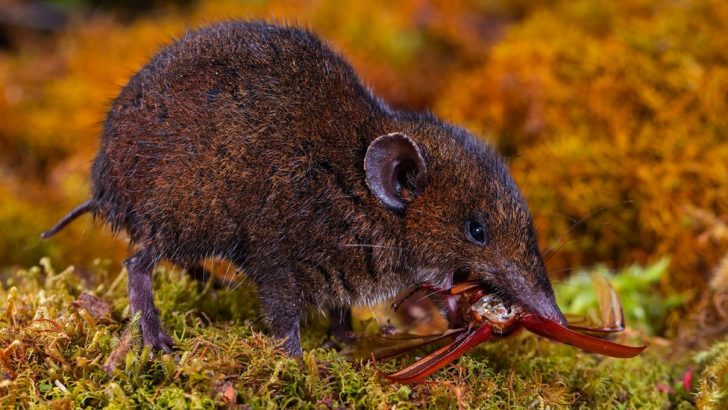Scientists have struck biological gold with the discovery of five new species of soft-furred hedgehog. An adorable but elusive creature that has long remained hidden in Southeast Asia’s lush forests. This breakthrough involved years of meticulous research, countless expeditions, and a rigorous examination of museum specimens collected decades ago.
The soft-furred hedgehog, known scientifically as Hylomys, is an unusual member of the hedgehog family, lacking the spines that define its relatives. Instead, it has a coat of soft fur, a distinguishing feature that makes it unique among hedgehogs. Until this recent find, only two species of Hylomys were known. This alone makes this discovery a significant milestone in biodiversity studies.

Discovery / Researchers from various institutions banded together to explore the hedgehog’s habitats, tracking the animals in remote forested areas.
Alongside these expeditions, scientists also re-examined Hylomys specimens that had been sitting in museum archives, some for over a century. Surprisingly, these dusty specimens contained secrets that had gone unnoticed for decades. Careful comparisons and analyses of these museum samples revealed subtle differences that confirmed two were entirely new species.
A Look into the Habitat of Soft-Furred Hedgehog
Venturing into Southeast Asia’s rainforests, researchers were keen on capturing a comprehensive understanding of the soft-furred hedgehog. These dense forests are critical habitats for the Hylomys genus. Thus, offering the perfect environment for these animals to thrive away from human eyes.
The intense biodiversity in these areas has long made them hotspots for scientific discovery, yet the forest's dense foliage and high humidity also make exploration challenging. Nevertheless, researchers set up remote observation stations and used camera traps to capture footage of these elusive animals.
The Discovery of Subtypes to the Species
The discovery didn’t end with the identification of new species. Researchers also observed significant distinctions between hedgehogs previously considered subtypes within one species. Detailed analysis confirmed that three of these supposed subtypes had enough unique characteristics to be classified as separate species.
This reclassification expands the known members of the Hylomys genus. Thus, turning three subtypes into three fully recognized species.
This step from subtype to species status isn’t taken lightly in the scientific world. For a species to be recognized officially, researchers must prove it possesses unique genetic, anatomical, or behavioral traits. In the case of these soft-furred hedgehogs, genetic studies backed by physical observation confirmed that these animals deserved recognition as distinct species.
Thus, this revelation underscores the complexity of biodiversity within the Hylomys genus. It shows how subtle differences can mark the boundaries between species.
The Unique Traits of the Soft-Furred Hedgehog
Unlike its spiny relatives, the soft-furred hedgehog boasts a unique appearance. With its small, long-nosed face and soft, velvety fur, it resembles a small shrew rather than the spiky hedgehog typically seen in gardens across Europe and North America.
This particular feature makes the Hylomys genus fascinating to scientists and nature enthusiasts alike.

Animal Planet / Their soft fur not only sets them apart! But it also hints at different evolutionary pressures faced by the Hylomys genus compared to other hedgehogs.
Living in tropical, humid forests, these animals do not need spines for protection. Instead, they have adapted to blend seamlessly with their environment. Their nocturnal habits and the dense, soft underbrush of their surroundings offer natural protection, allowing them to thrive without the defense mechanisms seen in their spiny counterparts.
Thus, with the identification of five new species, the soft-furred hedgehog family has grown. If anything, it showcases the hidden diversity in Southeast Asia’s forests. Scientists have long suspected that there were undiscovered members within the Hylomys genus. But only now has this suspicion been confirmed. The discovery brings the total number of known soft-furred hedgehog species to seven, a remarkable jump from the original two.




